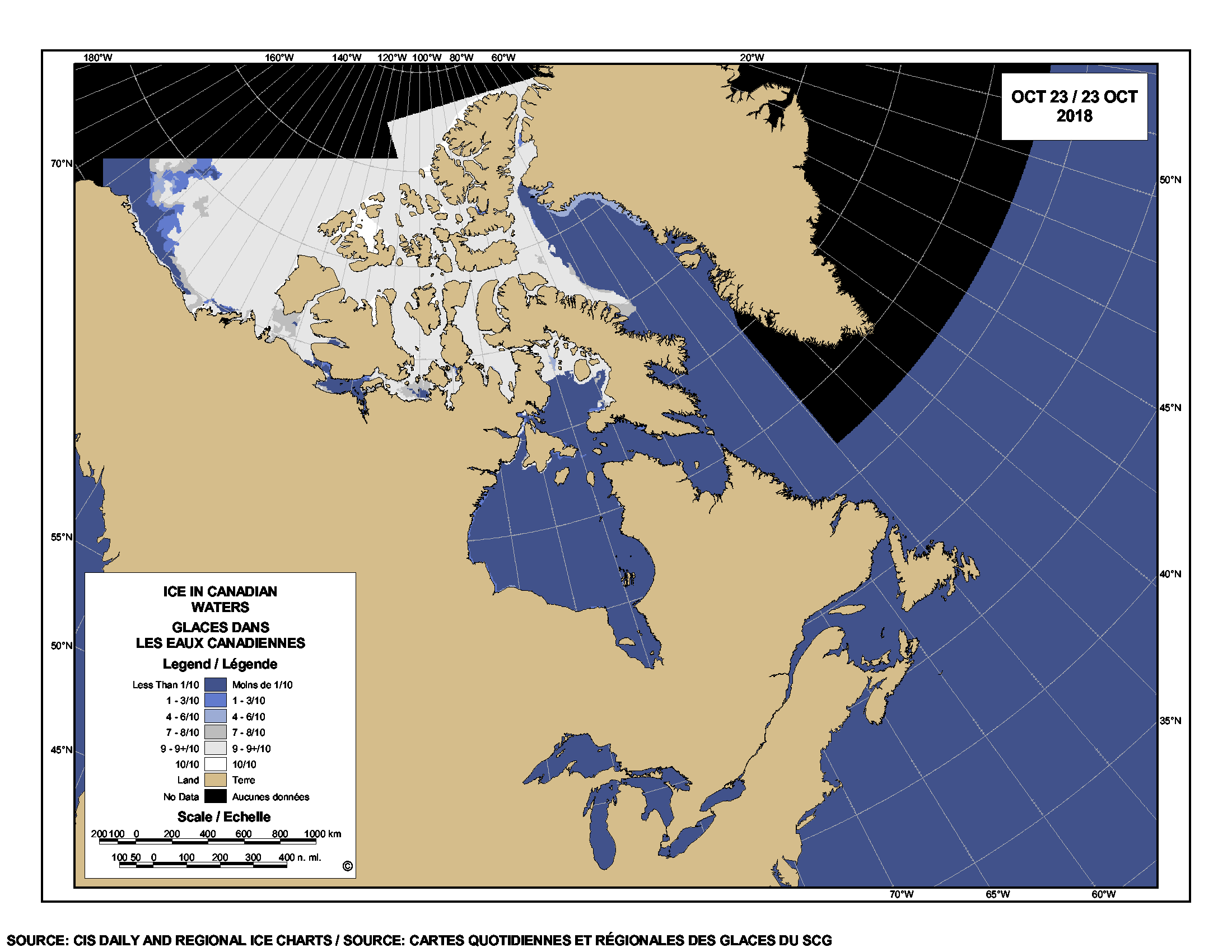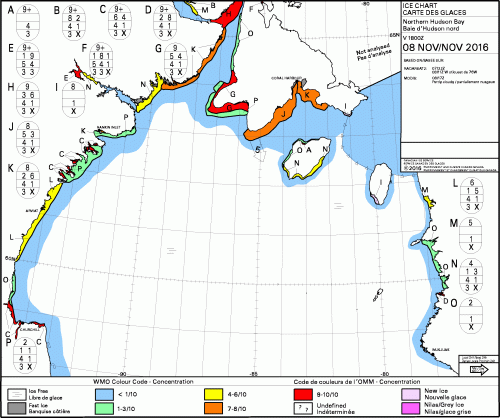 Last year, an early freeze-up of Western Hudson Bay sea ice almost ruined the Polar Bear Week campaign devised by Polar Bears International to drum up donation dollars and public sympathy for polar bear conservation.
Last year, an early freeze-up of Western Hudson Bay sea ice almost ruined the Polar Bear Week campaign devised by Polar Bears International to drum up donation dollars and public sympathy for polar bear conservation.
Many bears were on the ice hunting by 7-8 November in 2017 before the celebratory week was done (the average date that bears left the ice in the 1980s): sea ice charts suggest the same may be happening this year.
Ice is forming along the Hudson Bay coast more than a week earlier than it was last year (barely discernible on the map below but detailed ice charts show it clearly), consistent with an early build-up of ice in the Canadian Archipelago, East Greenland, and Foxe Basin since mid-September.

The question is: will the ice continue to build over the next few weeks or get blown offshore? See the ice charts below for this year and 2017.
Today’s ice chart for Hudson Bay, from the Canadian Ice Service (23 October 2018), shows gray ice already in place along most of the NW coast:

Conditions similar to today’s did not develop last year until the first of November:

However, an early freeze up is not guaranteed: in 2016, there was ice developing along the shore on the 8th of November (see below) but a south wind came along and blew it offshore.
Bears didn’t leave the ice for another four weeks (early December, which is quite late):

Time will tell.
Most bears have been onshore for almost four months (15 weeks) and reports from the Polar Bear Alert Program in Churchill for the third week in October (below) show that activity is picking up:

Last year at week 16 (week 15 was not reported), there had been somewhat less activity than this year (only 105 incidents vs. 173) but the message to the public was very similar:

In 2016, the situation was more similar to this year:
Read more at Polar Bear Science



















